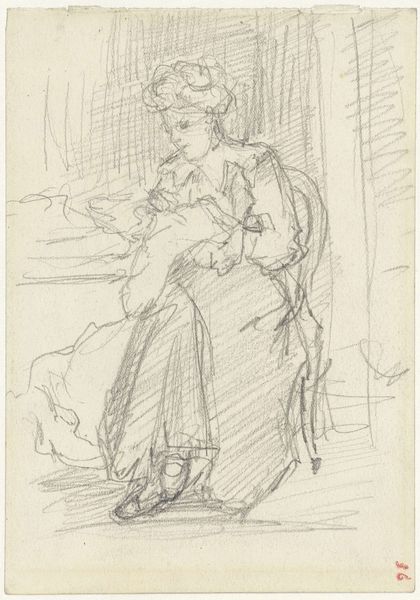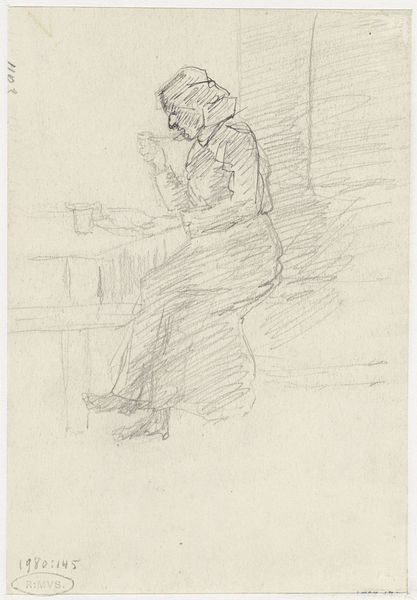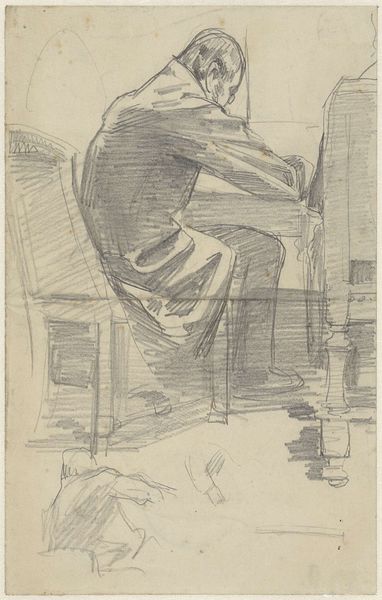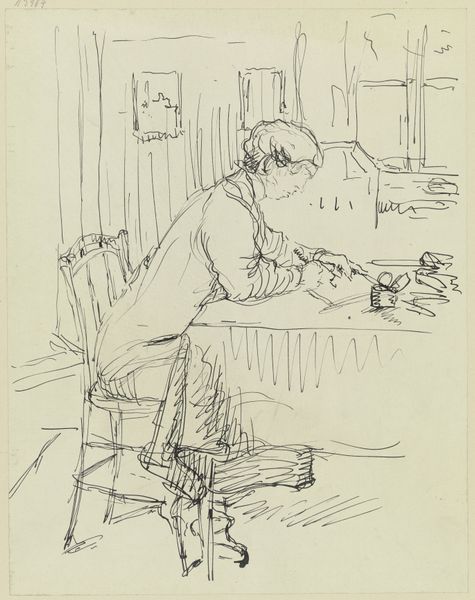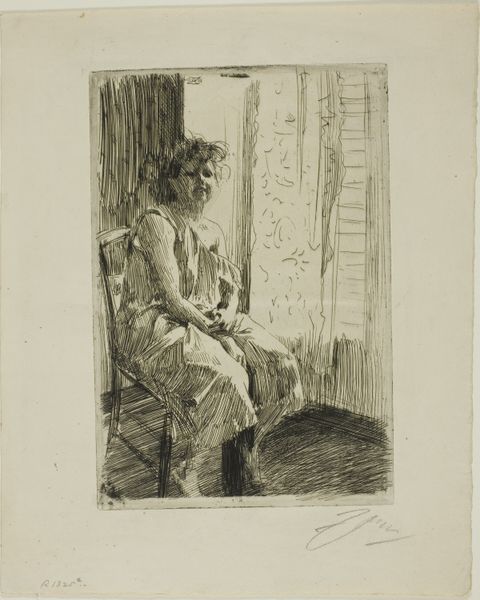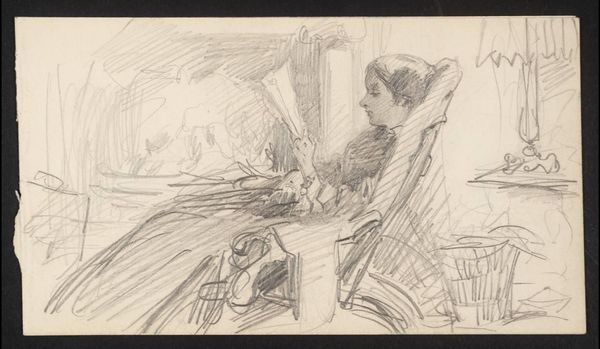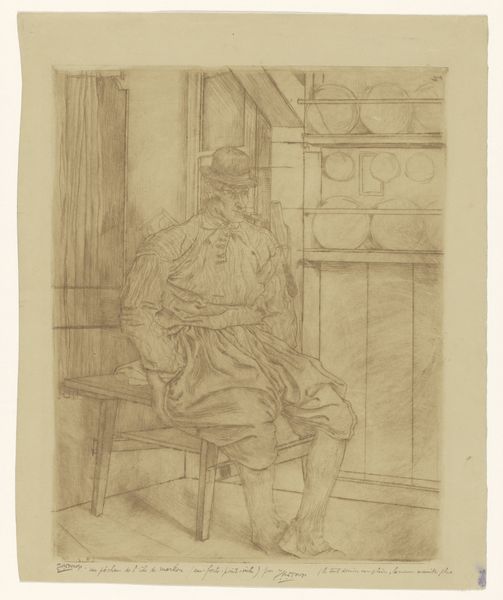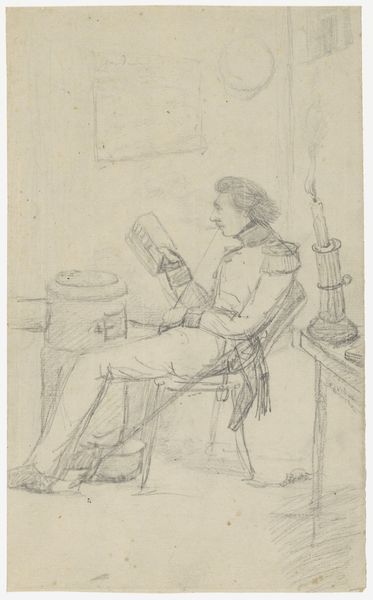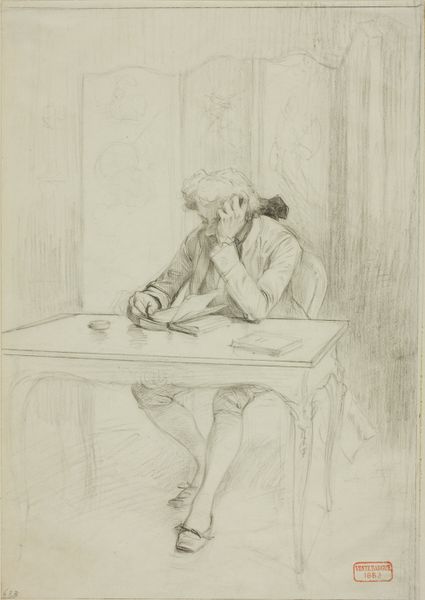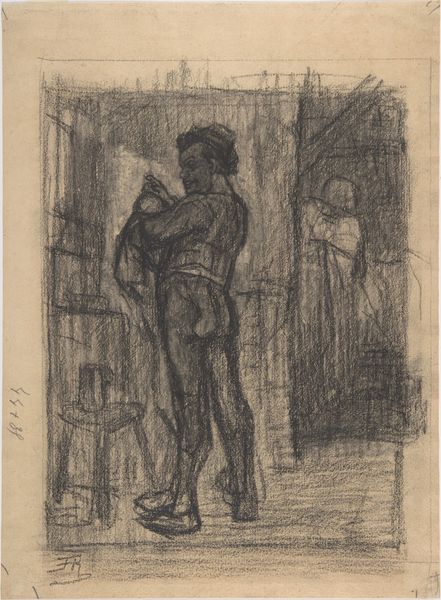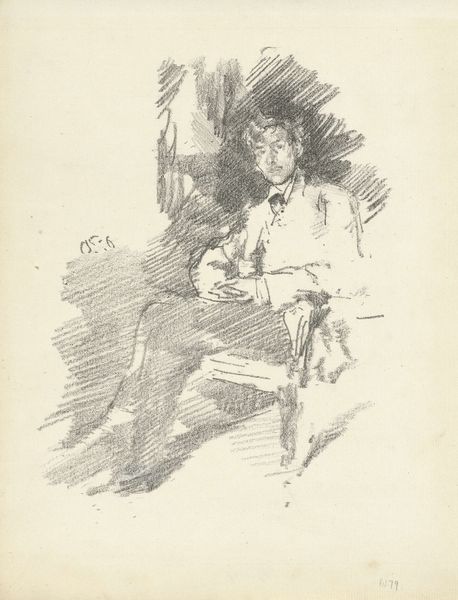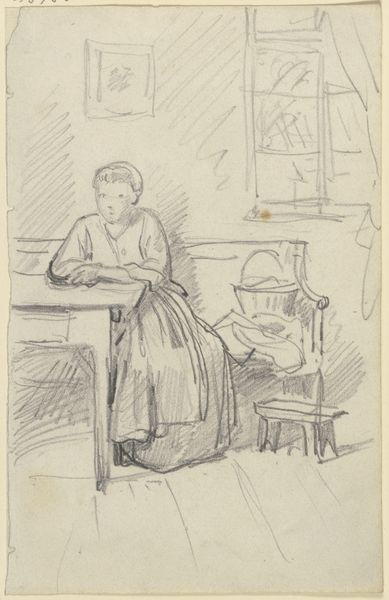
Copyright: Public Domain
Curator: Before us is "The violinist at the window", an 1859 drawing by Otto Scholderer, currently held at the Städel Museum. Editor: My immediate impression is one of quiet introspection. The light feels almost melancholic, filtered, and diffused. The loose cross-hatching suggests a fleeting moment captured in pencil. Curator: Indeed. Scholderer offers a glimpse into a genre scene bathed in Romanticism. Music and the window are powerful motifs here. Music represents harmony and emotion, the window as a portal connecting the interior, domestic sphere with the expansive outer world. Notice how the subject doesn't seem to directly engage with either, he’s in a liminal space. Editor: From a purely formal perspective, the composition is compelling. The window acts as a framing device, creating layers of depth. I am fascinated by the varying densities of line – they add texture, suggesting form without fully resolving it, it invites the viewer to fill in the blanks. Curator: And what blanks! A seated violinist gazing outward but his gaze appears directed at nothing in particular, as his fingers rest idly on the instrument. His posture denotes both a physical rest and a momentary emotional pause. The window seems to look onto a dream landscape, barely discernible, adding to this atmosphere of contemplation. He could be channeling some emotional memory. Editor: The choice of monochrome – pencil and ink on paper – furthers this. It allows Scholderer to focus on the modulation of light and shadow, creating mood rather than depicting concrete reality. Notice how the folds in the curtain amplify the effect? Curator: Yes, those heavy, soft curtains speak volumes. It may also symbolize memory. Pulling them aside could be a metaphor for revealing stories, a motif seen in many cultural interpretations of interiority and domestic life. The musician could be accessing something intangible beyond the literal scenery beyond the pane. Editor: It strikes me that while Scholderer hints at realism, the lack of firm lines places the figure and his environment somewhere in between tangible and imagined worlds. He occupies a realm both grounded and fleeting. Curator: And therein lies its magic, I think. Editor: I agree; it’s a skillfully created image of transience.
Comments
No comments
Be the first to comment and join the conversation on the ultimate creative platform.
